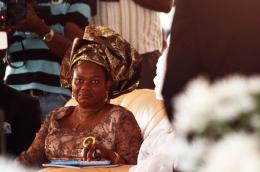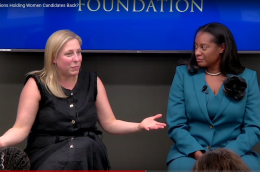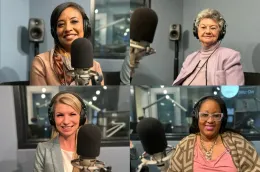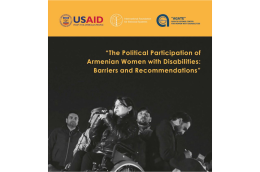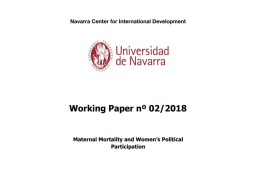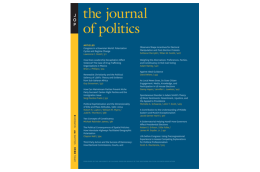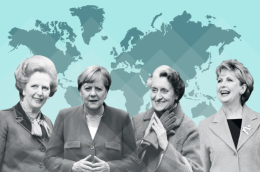Women's Leadership
Main navigation
The struggle of Black women to be recognized, respected, and welcomed as leaders is an international one. Generally, Black women have been absent and invisible from leadership positions in many countries—including the author’s home country of Nigeria, where a historical dearth of women in political or official positions remains very much the case today, despite purported efforts by the Nigerian government to increase women’s participation in politics.
According to Nigeria’s National Bureau of Statistics, the national average of women’s political participation in Nigeria has remained at 6.7 percent in elective and appointive positions—far below the global average of 22.5 percent. Many of the hurdles Black women face in Nigeria resemble those faced by Black women in the United States, including discrimination, stereotyping, and a lack of support.
But Nigerian women aspiring to leadership face other hurdles more specific to Nigerian culture. Nigeria remains a patriarchal society in which men are considered the “natural” decision-makers in every sector. Women are generally looked upon as mere housewives and homemakers, unfit to lead in any place where men dominate. In Igboland, it is considered an abomination for a woman to even look upon kola nut—a crucial part of many ceremonies, gatherings, and welcomings—or bless it in any event. Instead, it is the duty of the men to pass the kola nuts and bless them.
Women who do attain leadership positions are often antagonized by men, who do not want to take instructions from a woman. It is easy to villainize a Black woman on the basis of her gender, especially if she is challenging the status quo in her career path.
Read here the full article published by the Nonprofit Quarterly on 30 April 2024.
Image by Nonprofit Quarterly
.
Pursuing gender equality remains a significant challenge in the 21st century. Despite notable advancements in fields such as education, healthcare, and economic engagement, there remains a persistent disparity in the representation of women in leadership positions across various industries. This disparity not only hinders the optimal utilisation of the labour force but also restricts societal progress. Existing evaluation criteria often prove inadequate as they fail to account for the intricacies of women's leadership trajectories, particularly in the Global South nations. To bridge this divide, a comprehensive quantitative approach that delves into the nuances of female leadership and empowerment is imperative.
Reimagining gender indices
Several well-established indices have been crucial in assessing advancements in gender equality. The Global Gender Gap Index by the World Economic Forum and the Gender Inequality Index by the UNDP offer essential insights into various areas, including economic participation and political representation. Initiatives like the Women's Empowerment Principles by UN Women and the Women, Peace, and Security Index by Georgetown Institute shed light on specific facets of women's rights and inclusion. However, these measures often prioritise a limited number of indicators, primarily concentrating on outcome-driven data.
Read here the full article published by the Observer Research Foundation on 30 April 2024.
Image by Observer Research Foundation
.
Balancing family obligations and public service is a persistent challenge for working mothers in America’s political system, family advocates told the 2024 National Press Foundation Women in Politics Fellowship. They say the system has largely failed to account for childcare and other related responsibilities.
Liuba Grechen Shirley, founder of the Vote Mama Foundation, and Virginia state Sen. Jennifer Carroll Foy said additional support is needed, especially for working mothers. The support is required to gain equal access to elective office and other forms of public service.
“So, we are trying to change the structural barriers, trying to change the way that people run, trying to change the way that people serve,” said Grechen Shirley. Her group has been a leading advocate for mothers’ full participation in the nation’s political system. “There is now a very high attrition rate for moms serving in state legislatures… That needs to change.”
Read here the full article published by the National Press Foundation on 29 April 2024.
Image by National Press Foundation
.
In a webinar hosted by Grassroots for Europe, leading female activists and politicians discussed the critical role of women in defending democracy against Europe’s rising tide of autocracy, setting the stage for a transformative 2024 election season.
Grassroots for Europe, founded in 2018, promotes understanding and engagement with European issues at the local level. This webinar marks the 45th in its series of round table events, bringing together organisations and experts.
A timely and crucial dialogue
In an era where political landscapes are rapidly shifting, with various elections coming up around the world, the ‘Grassroots for Europe Round Table Webinar: Women’s Role in Democracy and Peace’ brought together a panel to tackle some of the issues facing Europe today. Held online via Zoom on 16 April, this pivotal discussion drew participants from across the continent.
Colin Gordon, vice chair of Grassroots for Europe, said: “This is the first time we’ve had an event specifically about women’s voice, agency and rights in campaigning and in European political activity”, though, in fact, as he also mentioned, “the majority of the founders of the initial round table were women activists from the grassroots”.
Read here the full article published by Yorkshire Bylines on 28 April 2024.
Image by Yorkshire Bylines
.
Colorado has consistently ranked highly for the number of women holding elected office for the last few decades. Colorado currently ranks second in the nation for the number of women elected to the state legislature. But this number only tells a fraction of the story.
Despite this ranking, political experts and female lawmakers around the state say there is still a lot of work left to be done to level the playing-field for women at the State Capitol.
According to the director of research at the Center for American Women and Politics, Kelly Dittmar, despite the robust recruitment of women for public office in Colorado, what Colorado’s national ranking doesn’t indicate is who these women are and the political power they hold.
“When we're thinking about women's political power and influence, it's important to look across different levels and types of office because we make assumptions that a state that's doing well at one level is doing well at all levels, and often that's not the case,” said Dittmar.
And this rings true for Colorado. Despite having a high number of women represented in the state legislature, Colorado has never had a female U.S. Senator, a female governor, or even a female mayor of Denver — the most powerful leadership positions in the state.
On top of that, women of color — particularly Latina, Asian, and Indigenous women — are significantly underrepresented in the Colorado state legislature.
According to Dittmar, lack of access to resources, gatekeeping, toxicity, and institutional racism and sexism are among the “unique dynamics” in Colorado that explain why women are either dissuaded from running for office or are unable to win elected offices.
Read here the full article published by Colorado Public Radio on 26 April 2024.
Image by Colorado Public Radio
.
Despite their increasing visibility, women in government must still contend with gendered biases about the ways in which they choose to present themselves.
New York City Council Member Shahana Hanif represents many firsts for the New York City Council. Not only is she the first woman to represent her district, but she is also the first-ever Muslim woman on the Council and one of two members of South Asian descent.
She was one of the first of her colleagues to openly support a ceasefire in Israel’s war against Gaza, and she has also helped propel the city’s immigrant workers’ bill of rights and universal composting program forward.
She is unique in her accomplishments and aspirations as a politician, yet she told City & State in an interview that she was once taken aback by a complaint – not about her work – but about her hair not looking like “some of these other council members who do their hair and appear presentable,” she said.
Read here the full article published by the City and State of New York on 25 April 2024.
Image by City and State of New York
.
